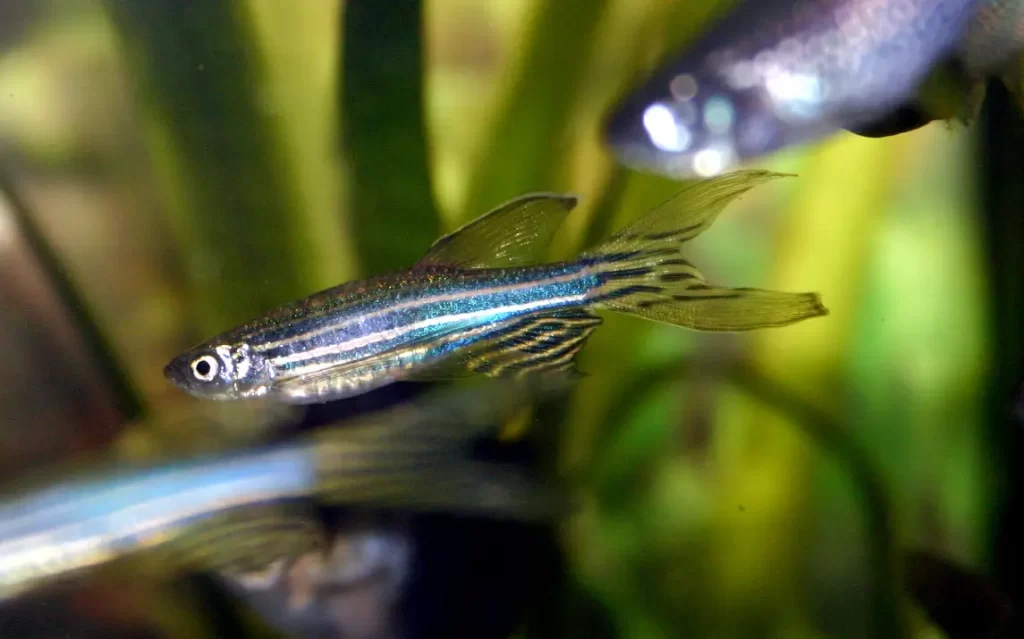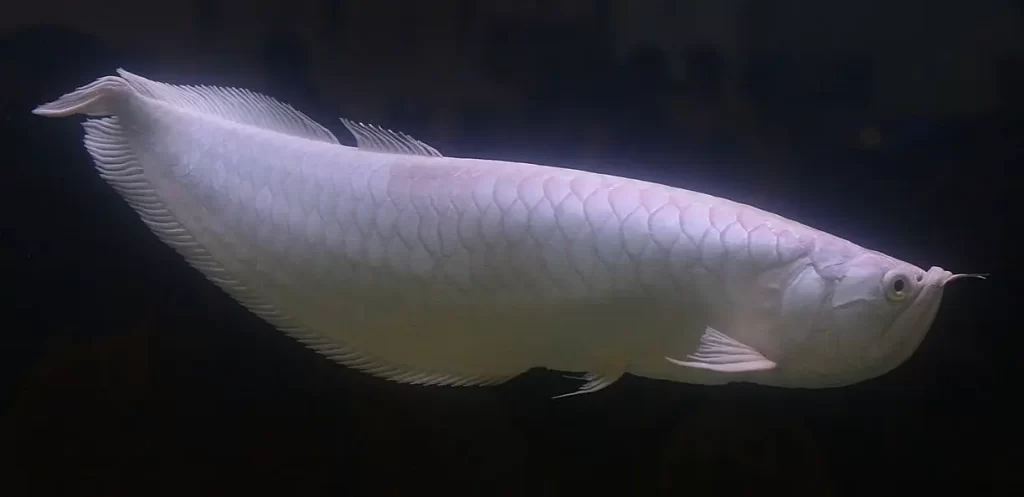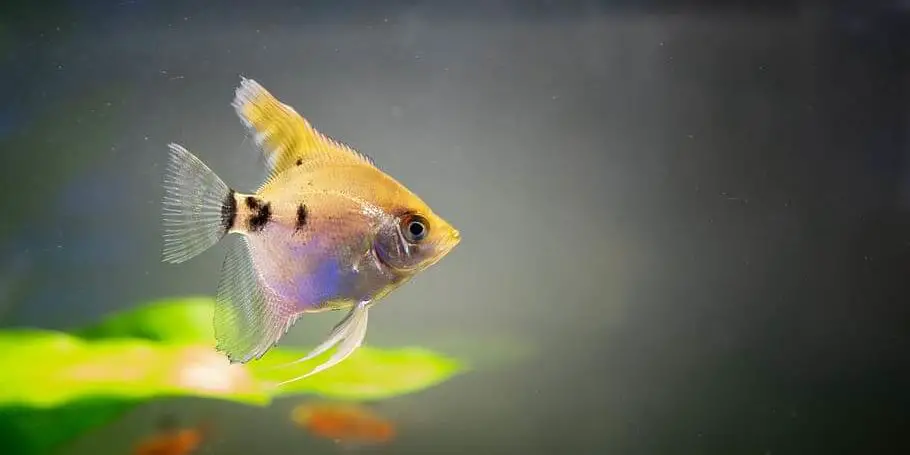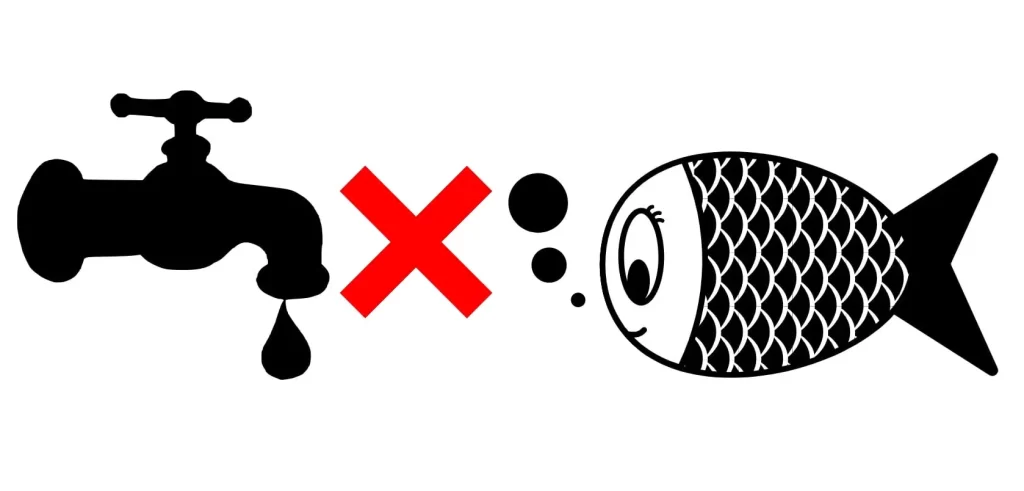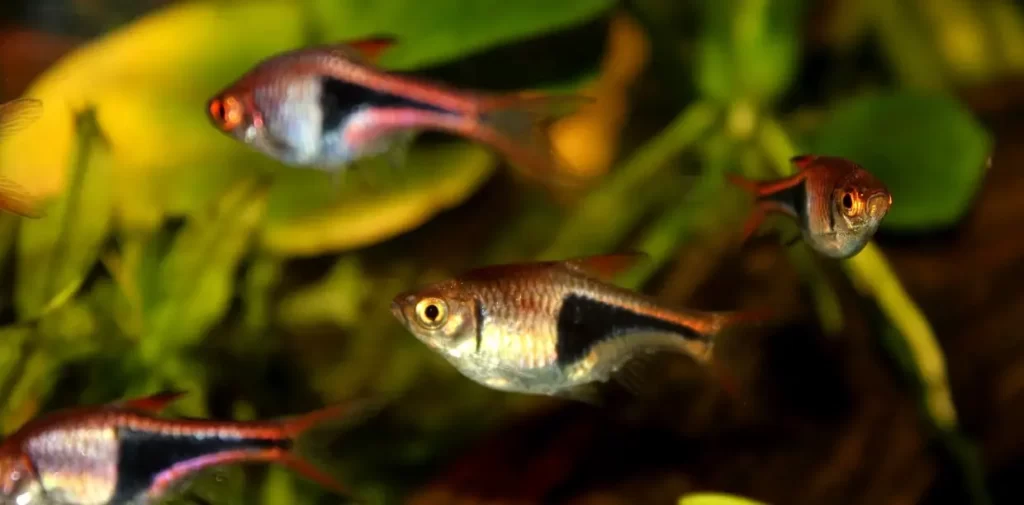During high school, I worked in an aquarium shop. One day in the shop, I met a middle-aged gentleman who was researching diseases in Danio Fish. The shop was about to close, he bought some Danio fish and asked me if he could drop me home. On our way home, the man told me about his research on Danio Fish. I got to know about Danio fish much more than I could have learned about it from the shop.
Danio fish is a small-sized friendly fish, and it is found in freshwater. The scientific name of Danio fish is Danio rerio, and it is commonly known as zebrafish. It can be found in Asian countries like Nepal, India, Bhutan, etc. There are different species of Danio fish, and all of them are popular for their body pigment and different patterns that they have on their body. All species of Danio fish are hearty, so it is very easy to take care of them. Danio fish is vulnerable to diseases when the aquarium water is not hygienic or is contaminated with bacteria via different means.
Mycobacteriosis, Microsporidiosis, Velvet, diseases caused by nematodes, Ich or White Spot Disease, Fungus, etc. are the most common diseases that can be found on Danio fish.
Changing the fish tank water frequently, proper hygiene of fish tank, and quarantining the infected fish can be the most effective prevention for Danio fish. The treatment facility for Danio fish includes:
- Use of proper FDA approved drugs and antibiotics.
- Consulting veterinarian.
- Maintain water temperature
- Proper cleaning of the tank.
- Provide good quality water etc.
Prevention is better than cure
In my view, the first and foremost step to prevent Danio fish from possible diseases is to maintain the proper hygiene of tank water. Things like decaying material and waste products of fish help to build up the ammonia content in the tank water, which is toxic for Danio fish. Furthermore, bacteria convert ammonia into nitrate and nitrite, which are also toxic chemicals for danio fish. So I highly recommend people to change the fish tank water frequently because it helps to get rid of all the possible bacteria that may contaminate the tank water.
Common diseases in Danio fish
Let me briefly explain the diseases that are common to Danio fish:
Mycobacteriosis
Mycobacteriosis is a granulomatous disease common to Danio fish caused by different species of Mycobacterium like M. marinum, M. fortuitum, M. chelonae, M. abscessus, M. haemophilum, and M. peregrinum/septicum.
The mycobacterium causes inflammation of different internal organs of the fish.
Symptoms
- Inflammation of internal organs.
- Significant weight loss.
- Change in skin pigments.
- Loss of fish scales
Cause
- Pathogens like mycobacterium cause mycobacteriosis.
- It is caused via the transmission of mycobacterium via the skin of infected fish or from fish carcasses.
Treatment
- A consistent dose of antibiotics. But sadly, it can return once the effect of antibiotics finishes.
Prevention
- Clean the fish tank water frequently to avoid any bacterial contamination.
- Quarantine infected fish so that other fish are not infected.
- Disinfecting or cleaning of the fish tank.
Microsporidiosis
Microsporidiosis is a disease that affects the central nervous system, and it may also result in deformities in the skeletal system of Danio fish. It is caused by a spore-forming parasite called microsporidia.
Symptoms
- Deformities in the skeletal system.
- Wounds in the nervous system.
- The body of these fish becomes very weak.
- Disruption in the normal body growth of the fish.
Cause
- Caused by an infection transmitted by Microsporidia pathogen in the form of spores.
- Transmission of infected tissues from infected fish.
- Maternal transmission.
Treatment
- No effective and permanent cure.
- The use of drugs like fumagillin DCH, albendazole, and monensin may be effective to some extent, but we need to consider the possible side effects of these drugs as well.
Prevention
- Sterilization of eggs using 25 to 50 ppm sodium hypochlorite to prevent maternal transmission of infection.
- Remove infected and dead fish from the fish tank.
- Use SPF fish products.
- Frequent monitoring of fish.
Velvet
Velvet is a very common disease in Danio fish, and Oodinium pathogen is responsible for this disease. Yellowish or rust-like dust substances appear on the body of Danio fish when they are infected by Oodinium pathogen. Other names for Velvet disease include rust disease and gold dust disease.
Symptoms
- Scratching body against the wall of a fish tank or against any other object available in the fish tank.
- Loss of appetite and loss of body weight.
- Skin starts to peel off.
- The appearance of yellowish or rust-like dust substance (spots) on the body of this fish.
- Fatigues can be seen on the fish.
- Clamped fins.
Cause
- Caused by Oodinium pathogen.
- Poor quality of water.
- Fluctuation in the water temperature.
Treatment
- Introducing the fish to dim light during the process of treatment.
- Maintain the temperature of the water.
- Frequently change the water in a fish tank.
- Add aquarium salt.
- Avoid using a carbon filter.
Prevention
- Frequent change of tank water.
- Maintain the quality of water.
- Feed a high-quality diet to the fish.
- Properly diagnose the fish before you introduce the fish into the aquarium.
Infection due to nematodes
Nematodes are simply the roundworms that can infect any organ of Danio fish, especially the digestive system. Nematodes are only a few millimeters in length, and there are different species of nematodes. Less number of nematodes in Danio fish may be harmless, but an increase in the number of nematodes may cause some health issues or even death eventually.
Symptoms
- A significant loss in body weight.
- Disruption in the proper growth of fish.
- Swelling of the body part of the fish.
Causes
- Decaying of organic material in a fish tank.
- Replication and multiplication of nematodes if the environmental condition is more favorable to the nematodes rather than Danio fish.
Treatment
- Consulting veterinarian for proper treatment.
- Using FDA approved drugs like fenbendazole and levamisole.
Prevention
- Quarantine infected fish.
- Proper diagnosis of fish before introducing it to the aquarium.
- Maintain the quality of water.
- Removal of decaying organic material.
Ich or White Spot Disease
Ich stands for Ichthyophthirius multifiliis, and it is a very common form of the disease for aquarium fish, including Danio fish. It is similar to Velvet disease. Instead of yellowish or rust-like spots on gills, fins, and the body of fish, white spots are generated in the case of Ich. Because of these white spots, Ich is commonly known as white spot disease. Protozoan parasites are the parasites that are responsible for the formation of the white spots.
Symptoms
- The appearance of white spots on fins, gills, and on the body.
- Scratching body against the wall of a fish tank or any other object available.
- Loss of appetite and weight loss.
- Clamped fins.
- Fatigues.
- Abnormal behavior like separating from the group, resting at the bottom of the tank, etc.
Causes
- Transmission of protozoan parasite from infected fish.
- Poor quality of water.
- Addition of infected equipment in the tank without sterilizing.
Treatment
- Maintaining tank water temperature.
- Proper cleaning of the tank.
- Provide good quality water.
- Using different drugs like Malachite Green, Acriflavine, Potassium Permanganate, (KMno4), Formalin, etc. for medication.
Prevention
- Raising the temperature to disrupt the life cycle of protozoan parasites (maintain the temperature between 75 and 80 °F (24 and 27° C)).
- Use sterilized tools for quarantining infected fish for treatment.
- Add aquarium salt.
- Sterilize any object before adding it to the tank.
- Heat treatment.
Fungus
A fungus is a type of disease in which there is a formation of cotton-like structure growing on the body, gills or fins of Danio fish. A fungal infection can damage different body parts of Danio fish like kidney, liver, skin, brain, etc.
Symptoms
- Growth of white or gray cotton-like structure on different body parts.
- Abnormal swimming behavior of the fish.
- Slow movement.
- Bulging eyes.
- Ulcer in internal organs.
Causes
- Poor quality of water.
- Decaying organic material.
- Infection transmission from infected fish.
- Filthy environment.
- The weak immune system of the fish.
Treatment
- Raising the temperature to warm the water because fungus can spread quickly in colder water.
- Proper medication using malachite green or potassium permanganate.
- Addition of aquarium salt in the right amount.
Prevention
- Removal of decaying organic material or fish carcass.
- Clean aquarium environment.
- Quarantine infected fish for healing purposes.
Gills Disease
Bacteria or fungal pathogens cause gills disease. Gill disease infects the gills of Danio fish and forms lesions on gills. As a result of this infection, it becomes very hard for these fish to breathe. This disease can be cured during its early stage via different available treatments, but late identification of these diseases can cause the death of these fish.
Symptoms
- It becomes hard for these fish to breathe (Problem in respiration).
- Formation of lesions on gills.
- Clamped fins.
- Swollen gills and formation of mucus from gills.
- Loss of appetite.
- Rapid gill movement.
Causes
- Low level of oxygen in the water.
- Poor quality of water.
- The use of chlorine water affects the gills.
- Overpopulation of fish.
Treatment
- Addition of aquarium salt.
- Use antibacterial treatments.
- Sterilize objects before addition.
- Avoid the use of chlorine because it irritates the gills of this fish.
- Frequent change of tank water.
Prevention
- Test and avoid the excessive content of ammonia, nitrite, nitrate, chlorine, or ph.
- Disrupting the spread of the fungus that infects the gills of these fish.
- Proper working of water filters and heaters.
- Frequent change of tank water.
- Monitor your Danio fish to detect any gill disease at an early stage before it’s too late.
Columnaris
Columnaris is a disease also known as cottonmouth, which is caused by gram-negative bacterium Flavobacterium columnare. It is a bacterial infection, and it’s widespread can increase the mortality rate of the fish population.
Symptoms
- Formation of cotton-like structure around the region of gills.
- Loss of appetite.
- The slow movement of fish.
- The occurrence of lesions on the skin, head, fins, or mouth.
- Due to the infection, the gills of the fish become white, brown, or yellowish.
- Skin ulcer
- Fins start eroding.
Causes
- Caused by columnaris bacteria when it enters the fish through wounds, gills or mouth
- Poor quality of water.
- Low level of oxygen in the water.
- Overpopulation of fish.
- Unhygienic food.
Treatment
- Consulting veterinarian for medication through proper drugs and antibiotics (nitrofurazone Copper sulfate, Acriflavine, Furan, and Terramycin and kanamycin).
- Add the required amount of aquarium salt.
- Proper vaccination.
- Supply clean water.
- Maintain tank water temperature up to 75 °F (24 °C) because columnaris can spread widely in warm water.
Prevention
- Supplying clean water.
- Removal of organic waste or decomposable organic material
- Quarantine infected fish.
- Provide quality food.
- Disinfect the fish tank.
Swim bladder disorder
Swim bladder disorder is a kind of disease in danio fish, which causes abnormal functioning of the swim bladder of the fish. It helps to keep the fish floating in the water without drowning. More air in the swim bladder helps the fish to move upward, and less air in the swim bladder helps the fish to move downward. So when the fish suffers from swim bladder disorder, it starts floating in water in the nose down and tails up position or upside-down position. Also, the fish can appear floating on top or the bottom of the tank.
Symptoms
- Abnormal buoyancy of the fish.
- Curved spine.
- The fish floats at the top or bottom of the tank.
- The fish floats in the nose down and tail up position or upside-down position.
- Swollen belly.
Causes
- Poor quality of water
- Bacterial or parasitic infection
- Swelling stomach due to some parasites, constipation, wrong food, etc
- An abrupt change in temperature.
Treatment
- Cleaning tank and tank water.
- Add aquarium salt.
- Maintain the tank water temperature (75-80 degrees Fahrenheit).
- Do not feed the infected fish for a few days (3 to 4 days).
- Feed cooked and green peas (Remove skin before feeding).
- Consult veterinarian.
Prevention
- Do not overfeed the fish.
- Supply food in the right amount to avoid constipation.
- Provide a proper diet.
- Clean the tank and tank water regularly.
- Maintain the tank water temperature (75-80 degrees Fahrenheit).
Conclusion
This is all I know about Danio fish. I hope my information about Danio fish will help you guys to keep your Danio fish healthy. Always remember that prevention is better than cure. So before I conclude myself, I want you guys to keep these things in mind to keep your Danio fish away from any possible infection and disease:
- Frequent change in tank water.
- Cleaning or disinfecting the tank.
- Maintain the water temperature.
- Sterilize new objects before adding them to the tank.

